
You’re knee-deep in the quest to piece together the perfect home gym. I get it. We’ve all been there—scrolling through pages of gym equipment, pondering over the best flooring options, and trying to make sense of a budget that doesn’t scream, “You’ve got to be kidding me!”
Enter the unsung hero of DIY gym flooring: horse stall mats. Yes, you heard that right—those hefty, rugged mats designed for our equine friends might be the game-changer you need. But can these mats, known for housing hooves and hay, really stand up to your burpees, deadlifts, and power cleans?
In the home gyms, where every square foot counts and durability is king, horse stall mats are stepping out of the stable and into the spotlight. They’re tough and resilient, and let’s not tiptoe around that they’re often way cheaper than traditional gym flooring. Plus, they’ve got that “recycled rubber” badge, which is pretty cool if you’re into eco-friendly solutions.
So, grab a protein shake and settle in as we dive into the nitty-gritty of transforming your workout space with horse stall mats. We’ll explore whether they’re a match for the clang and bang of your weightlifting routine and if they can handle the hustle of your high-intensity interval training. It’s time to discover if these mats are the secret ingredient to creating a home gym that even your wallet will love.
Stay tuned as we lay it all out—literally. From cutting to size to dealing with that ‘new mat’ smell, we’re not shying away from the good, the bad, and the rubbery. Let’s get to the bottom of this, shall we?
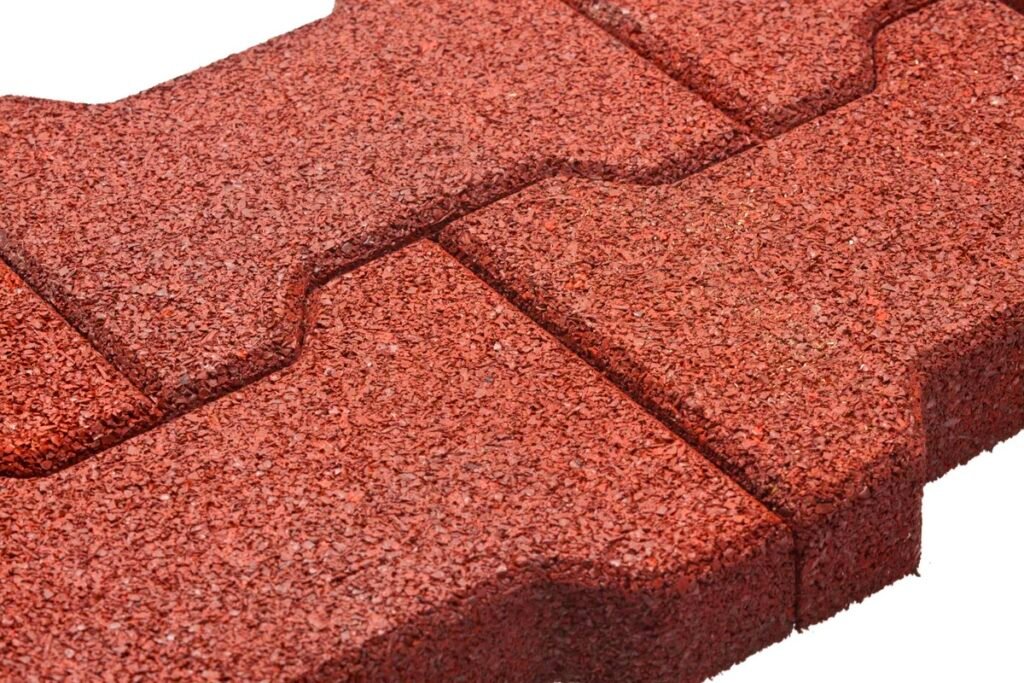
What Makes Horse Stall Mats a Smart Choice for Home Gym Flooring?
So, you’re eyeing those horse stall mats and wondering if they’re more than just a makeshift solution for your home gym, right? Let me tell you, these mats are like the Swiss Army knife of gym flooring—versatile, durable, and surprisingly savvy for your wallet.
Durability That Lasts Longer Than Your Longest Plank
First up, let’s talk about durability. Horse stall mats are designed to withstand the weight and movement of horses. These creatures can weigh anywhere from 900 to 2,000 pounds, and these mats handle that day in and day out. Now, unless you’re secretly a centaur, chances are you won’t be putting quite the same stress on them. This means they’ll last an incredibly long time under the strain of your dumbbells and kettlebells, even if you drop a weight or two during those sweat sessions.
Shock Absorption That’s Kinder to Your Joints
Regarding shock absorption, these mats are like the best kind of workout buddy—supportive. They’re thick (usually around 3/4 inch), made of dense rubber, and absorb impact like a champ. This is a big deal because it means less stress on your joints as you jump, lift, and lunge. Plus, they help to muffle the sound of weights hitting the floor so that you won’t be that neighbor.
Cost-Effectiveness Now, let’s talk business—or rather, money. Traditional gym flooring can be a significant investment, and when you’re setting up a home gym, expenses stack up faster than heavy plates on a barbell. On the other hand, horse stall mats are a fraction of the cost. We’re talking about a difference that can run hundreds, if not thousands, of dollars, depending on the size of your gym space. And with the money you save, you can invest in other cool stuff (like that fancy rowing machine you’ve been eyeing).
A Match for Your Aesthetic
And hey, let’s remember looks. Horse stall mats have a sleek, no-nonsense aesthetic that can give your home gym that professional edge. You can go for that rugged warehouse vibe or a clean, minimalist look—these mats can blend in with just about any style you’re going for.
In the ring against traditional gym flooring, horse stall mats punch way above their weight class. They’re the underdog that comes out on top, providing a practical, cost-effective solution without compromising quality. So, if you want to set up a home gym built to last without breaking the bank, horse stall mats might be your MVP.

Are Horse Stall Mats Comparable to Commercial Gym Flooring?
When you step into a commercial gym, you’re greeted by a sea of specialized rubber flooring that countless athletes have put through its paces. It’s tough, resilient, and designed with the specific needs of a gym in mind. But here’s the kicker: horse stall mats are often made from the same high-density rubber material.
The Similarities That Make Stall Mats Stand Out
Let’s break it down. Both commercial gym flooring and horse stall mats are crafted to endure. They’re like the heavyweight champions of flooring—resilient under pressure and quick to bounce back. The rubber material provides a firm yet forgiving surface that can take a beating from dropped weights and high-traffic use.
The Differences That Matter
However, there are a few differences. Commercial gym flooring often comes with a higher price tag due to its branding and the specific engineering for human activity. It may also feature a finer finish, more consistent coloring, and a more precise fit. Horse stall mats, by contrast, are the no-frills, workhorse alternative. They’re less about looks and more about function, focusing on durability over design.
From Stalls to Squats: The Transition to Home Use
In a commercial gym, aesthetics, and long-term branding are essential, but performance and cost-effectiveness can take the front seat in your home gym. Horse stall mats bring that commercial-grade durability into your home without the cost. They’re not just comparable; they can be a smart, strategic choice for the home gym owner who values function and practicality.
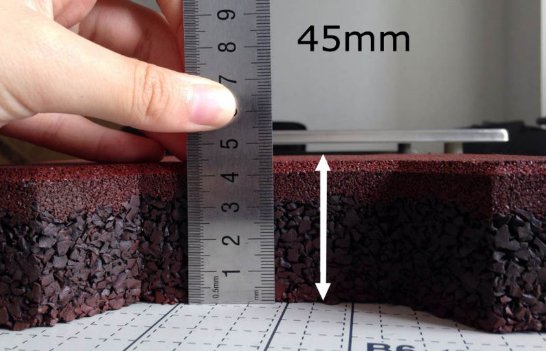
How Do Horse Stall Mats Hold Up Against Heavy Weights and Intense Workouts?
You’re not horsing around in your home gym and need a floor that can keep up with your iron-pumping, high-intensity workouts. Horse stall mats are up to the task. These mats are designed to support the weight of, well, a horse—which can be well over a thousand pounds. This means they’re more than capable of handling your heavy dumbbells, barbells, and weight machines.
Built to Resist Wear and Tear
The dense, thick nature of these mats doesn’t just absorb the shock of heavy lifts; it resists the scuffs, gouges, and indentations that can come from dropped weights. The surface is tough enough to withstand the kind of wear that would tear up lesser materials, making them a solid ally in your quest for fitness.
Can You Cut Horse Stall Mats to Fit Your Home Gym Space?
Your home gym isn’t a perfect rectangle, or you have a tricky corner that needs a custom fit. No worries—horse stall mats are surprisingly DIY-friendly.
Here’s a quick guide on how to cut them down to size:
Step-by-Step Cutting Guide
1. Measure Twice, Cut Once: Carefully measure your space. Then, mark the dimensions directly onto the mat with a white marker or chalk.
2. Get the Right Tools: You’ll need a sharp utility knife and a straight edge. A T-square or a long level can help you keep things straight.
3. Score the Mat: Run your utility knife along the straight edge to score the mat. You’ll want to make a few passes to deepen the cut.
4. Bend and Snap: Once you’ve scored the mat deeply, bend it along the cut line to open the score. This makes it easier to cut through the rest of the material.
5. Finish the Cut: Run your utility knife through the opening, using the bend to your advantage, until you’ve cut through the mat.
6. Clean Up the Edges: If there are any rough edges, you can clean them up with your knife or sand them down slightly for a smoother finish.
Remember to take your time cutting to ensure a clean, straight edge. You can have a custom-fitted gym floor that looks and performs great with a bit of patience.

What Are the Best Alternatives to Rubber Mats for Horse Stalls and Gyms?
Rubber mats are the go-to for many gym and stall owners, but what if you want something different? You may be allergic to latex, or you may be after a different aesthetic. Whatever the reason, you’ve got options.
Foam Tiles: The Lightweight Contender
Foam tiles are a popular alternative, especially for activities like yoga or Pilates, where cushioning is critical. They’re lightweight, easy to install, and come in various colors and thicknesses.
Pros:
– Excellent for low-impact workouts.
– Gentle on the joints.
– Insulating properties can be a bonus in a cold garage or basement.
Cons:
– Rubber is more durable; heavy weights can leave permanent indentations.
– Can be slippery when wet, which is a no-go for sweaty workouts or spill-prone areas.
Interlocking Stall Mats: The Puzzle Piece Solution
Interlocking stall mats offer a middle ground. They’re usually made of rubber or a rubber composite, which means they have some of the durability of traditional stall mats but with a bit more flexibility in terms of installation and coverage.
Pros:
– Easier to move and adjust than one-piece mats.
– The interlocking design minimizes shifting.
– Can be more aesthetically pleasing than traditional stall mats.
Cons:
– The seams can collect dirt or moisture, which means more cleaning.
– Depending on the material, they may not be as durable as solid rubber mats.
Whether you’re outfitting a stall or a squat rack, consider your primary needs. Solid rubber might be your best bet if you’re lifting heavy and dropping weights. For bodyweight exercises and yoga, foam could be the winner. And if you need both, interlocking mats could be your gym floor MVP.
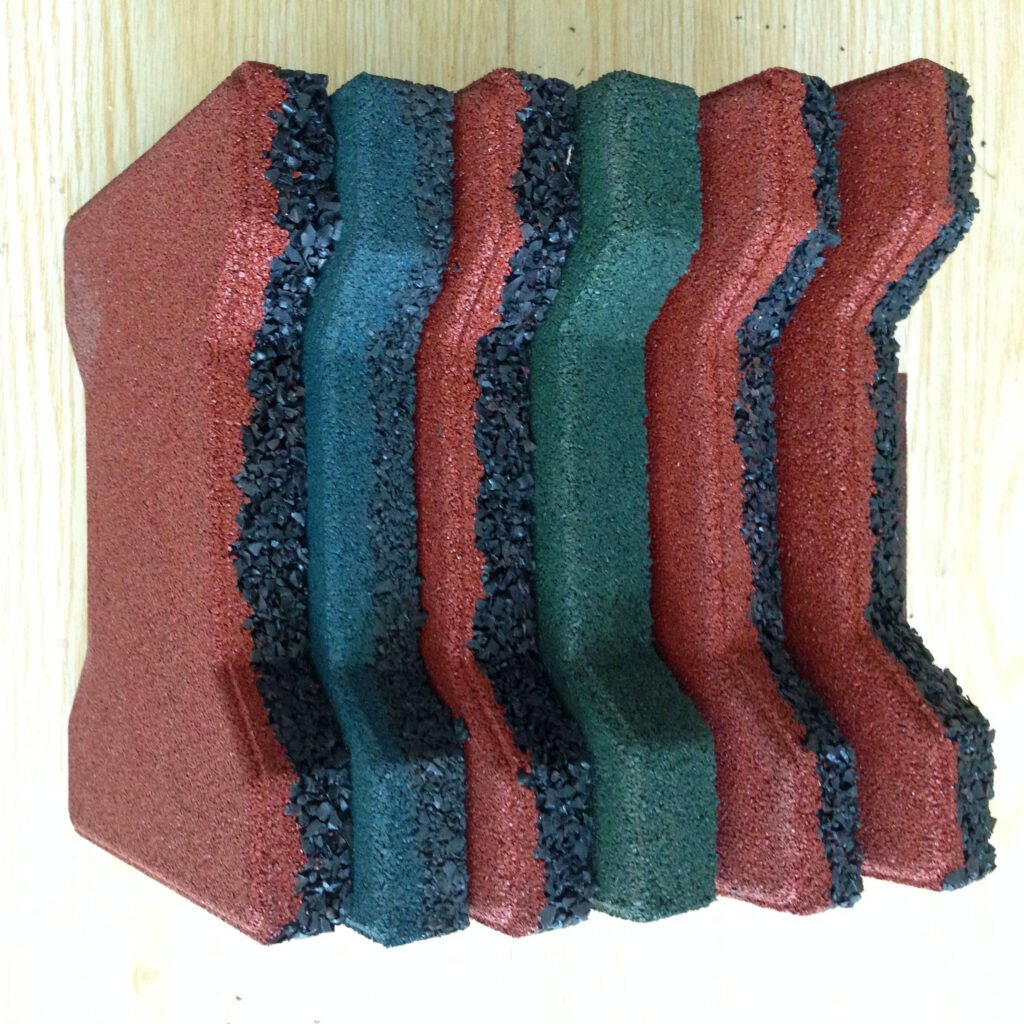
How Can You Reduce the Strong Rubber Smell of New Stall Mats?
Ah, the scent of fresh rubber—it’s as intense as it is persistent. But don’t worry, you won’t be stuck with that new mat smell forever.
Here’s how to clear the air:
Air Them Out
The simplest solution is to let the mats off-gas outside for a few days before bringing them into your home or gym. If you have a yard or a well-ventilated garage, lay them out and let nature do the work.
Use a Neutralizing Cleaner
There are cleaners designed to neutralize odors, including that rubbery tang. Look for a non-toxic option safe for rubber, and give your mats a good scrub down.
Try a DIY Solution
Suppose you’re into home remedies; mix water and white vinegar (about a 1:1 ratio) and spray it onto the mats. The vinegar is a natural odor neutralizer and should help diminish the rubber smell.
Baking Soda: The Odor Absorber
Sprinkle baking soda on the mats and let it sit overnight before sweeping or vacuuming. Baking soda is known for absorbing odors and is gentle enough not to damage the carpets.
Keep It Fresh
Once installed, keep the area well-ventilated. Over time, the smell will dissipate, especially if you can open windows or use fans to keep the air moving.
Remember, the rubber smell is strongest when the mats are new and will decrease over time. Your gym or stall will smell fresher with some patience and these tips.
This content provides practical alternatives to rubber mats for horse stalls and gyms and solutions to one of the most common issues with new rubber mats—the smell. The tone remains friendly and informative, aiming to help readers make the best choice for their needs.
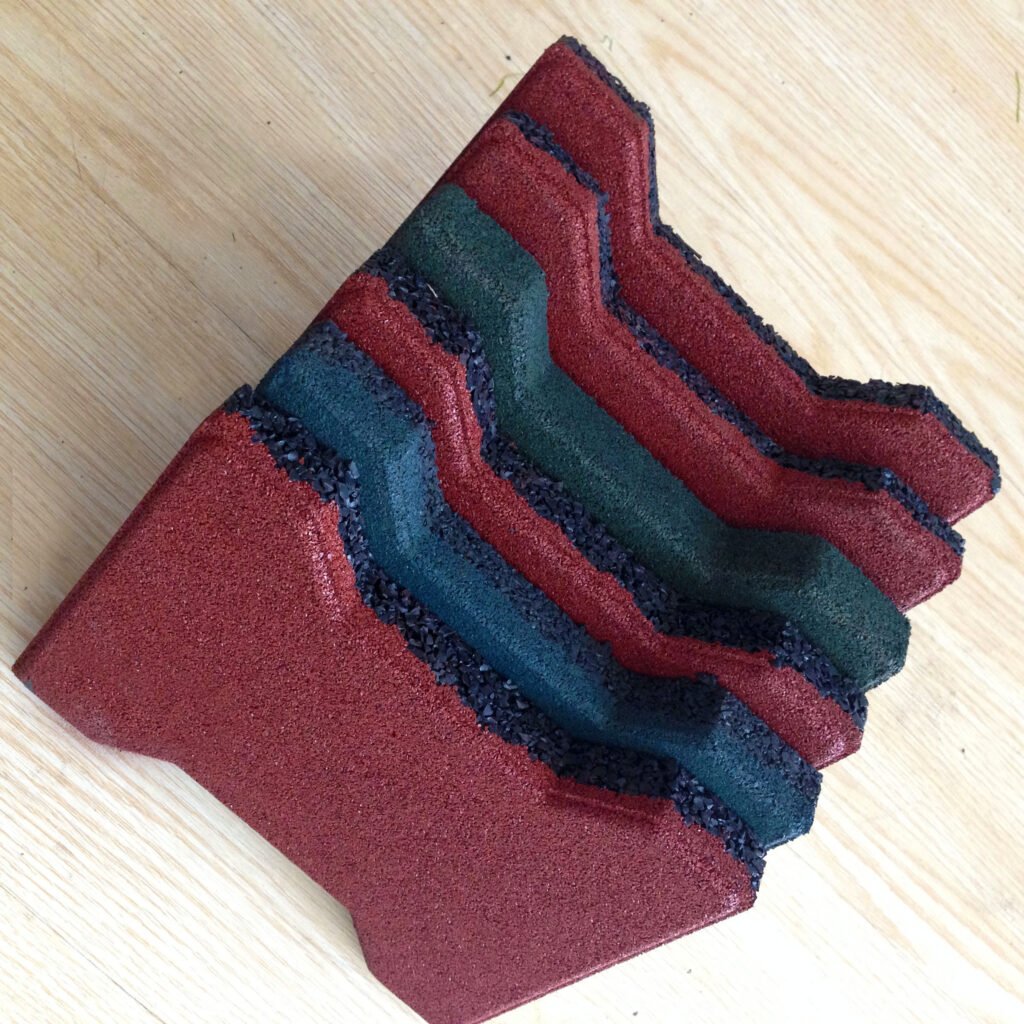
Why Are Home Gym Horse Stall Mats a Wise Pick for Workout Space?
Are you pondering over the perfect pick for your home gym flooring? Horse stall mats might be the unsung heroes you’re looking for. These durable mats are not just for large animals anymore; they’ve galloped into the spotlight as a savvy choice for home gym owners looking to save money without skimping on quality.
The Robustness That Rivals Commercial Gyms
Crafted from heavy-duty rubber, these mats resemble what you’d find underfoot in commercial gyms. They’re designed to endure the kind of excessive wear from free weights clanging and shuffling power racks. This makes them a prime choice for garage and basement gyms, where a durable mat is non-negotiable.
Cost-Effectiveness That Doesn’t Compromise on Quality
Regarding rubber gym flooring, horse stall mats offer a shock-absorbent surface at a fraction of the cost of traditional rubber flooring tiles. They provide a flat surface with just enough give to protect your joints and the floor underneath from the impact of intense workouts. Plus, they’re a water-resistant and slip-resistant option that’s easy to clean, making them practical for spaces with a lot of action.
Aesthetic and Functional Flexibility for Large Spaces
While rubber stall mats may initially come with a strong odor, this can be mitigated with proper airing out, leaving you with a rubber gym that’s as fresh as it is functional. And let’s remember the aesthetic appeal. These rubber floor tiles can give your space a professional gym vibe, with noise-reduction capabilities to keep your workouts from disturbing the peace.
How to Tackle the Strong Odor of New Rubber Stall Mats?
Have you got new rubber stall mats with that all-too-familiar strong rubber smell? No sweat! Here’s how to freshen up your space and get to your workouts without that overpowering scent.
Ventilation is Key
Before installing, give your new gym floor mats some time to off-gas—preferably outdoors. This will significantly reduce the pungent odor, making them more pleasant for indoor use in your home gym.
Cleaning Solutions That Work
For those persistent scents, a good scrub with a cleaner designed for rubber mats can do wonders. Opt for a solution that’s tough on odor but gentle on your carpets to maintain their slip-resistant surface.
DIY Odor-Busting Tricks
If you’re a fan of home remedies, mix up a concoction of water and vinegar to spritz on your mats. This can help neutralize the smell without damaging the shock mats. For an extra odor-absorbing boost, sprinkle baking soda over the carpets, let it sit, and then vacuum it up the next day.
Maintain Freshness Over Time
Once your rubber stall mats are laid out, and the smell has diminished, keeping your gym space well-ventilated will help any lingering odor to dissipate more quickly. This way, you can focus on your fitness goals in a fresh, clean-smelling environment.
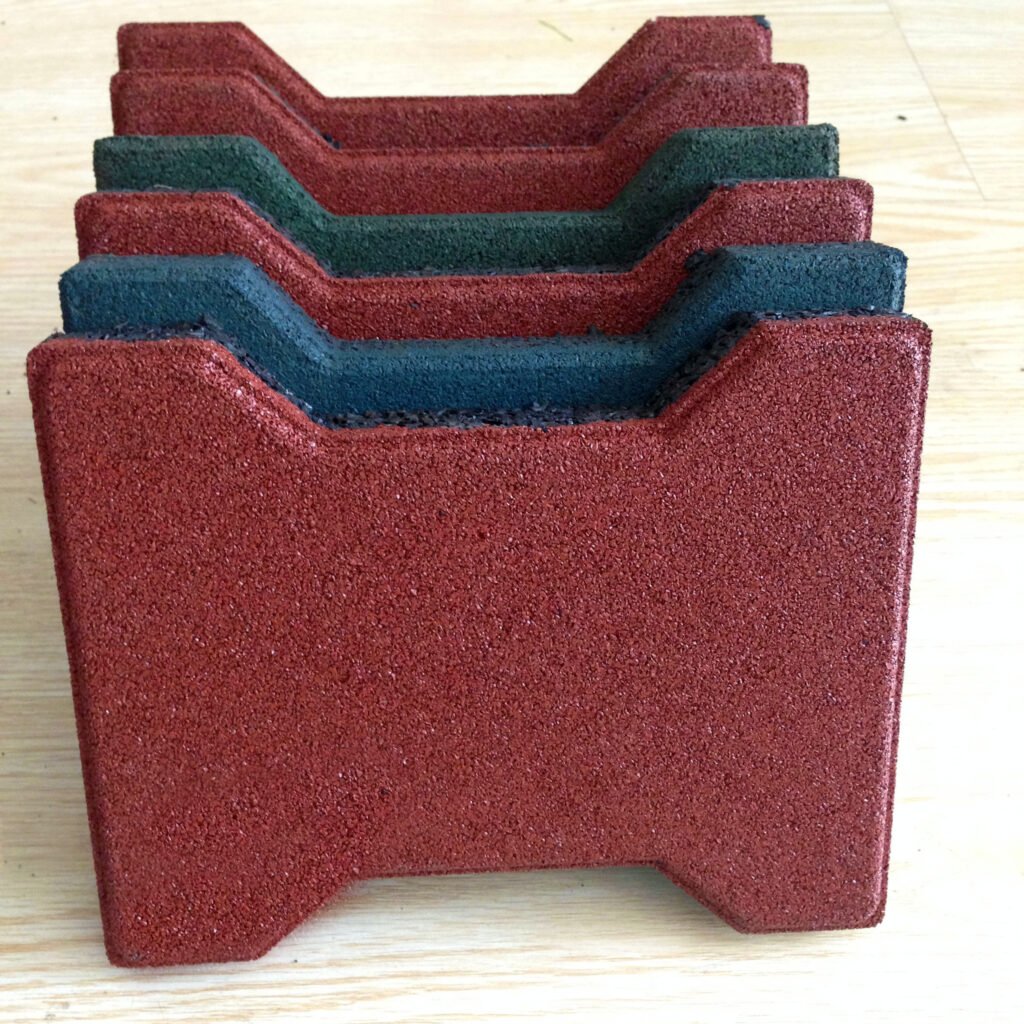
How Do You Properly Install Horse Stall Mats in Your Home Gym?
Installing horse stall mats in your home gym is a straightforward process that can yield a professional-grade gym floor at a fraction of the cost. Here’s how to ensure a flat, slip-resistant surface that matches even the most rigorous workouts.
Step 1: Measure Your Space
Before you do anything, measure your gym’s square footage to determine how many mats you’ll need. Most home gym owners find that standard horse stall mats, which typically come in 4×6 feet sizes, fit well in various room shapes. However, you may need to cut some mats to fit your space perfectly.
Step 2: Prepare the Subfloor
Ensure the floor underneath where you’ll lay the mats is clean, dry, and level. Any dirt or debris could cause unevenness, and moisture can lead to mold or mildew under the carpets.
Step 3: Lay the First Mat
Start in one corner of the room and lay your first mat down. Press it firmly to the floor and smooth out any bubbles or ridges.
Step 4: Add Additional Mats
Lay the next mat tightly against the first, ensuring the edges are snugly fitted together to prevent uneven seams. Continue this process, working your way out from the corner.
Step 5: Secure the Mats
While horse stall mats are heavy and often don’t require adhesive to stay in place, for added security, especially in high-impact areas, you can use double-sided carpet tape or a commercial-grade adhesive around the perimeter and at the seams.
Step 6: Trim as Needed
If you need to trim any mats to fit around corners or poles (like a power rack), measure the area carefully and use a straight edge and a utility knife to cut the mat. Remember to score the carpet several times to make the cutting easier.
Step 7: Final Adjustments
Once all mats are laid down, walk over them to ensure they’re flat and secure. Make any necessary adjustments to ensure there are no raised bumps that could cause tripping or interfere with your equipment.
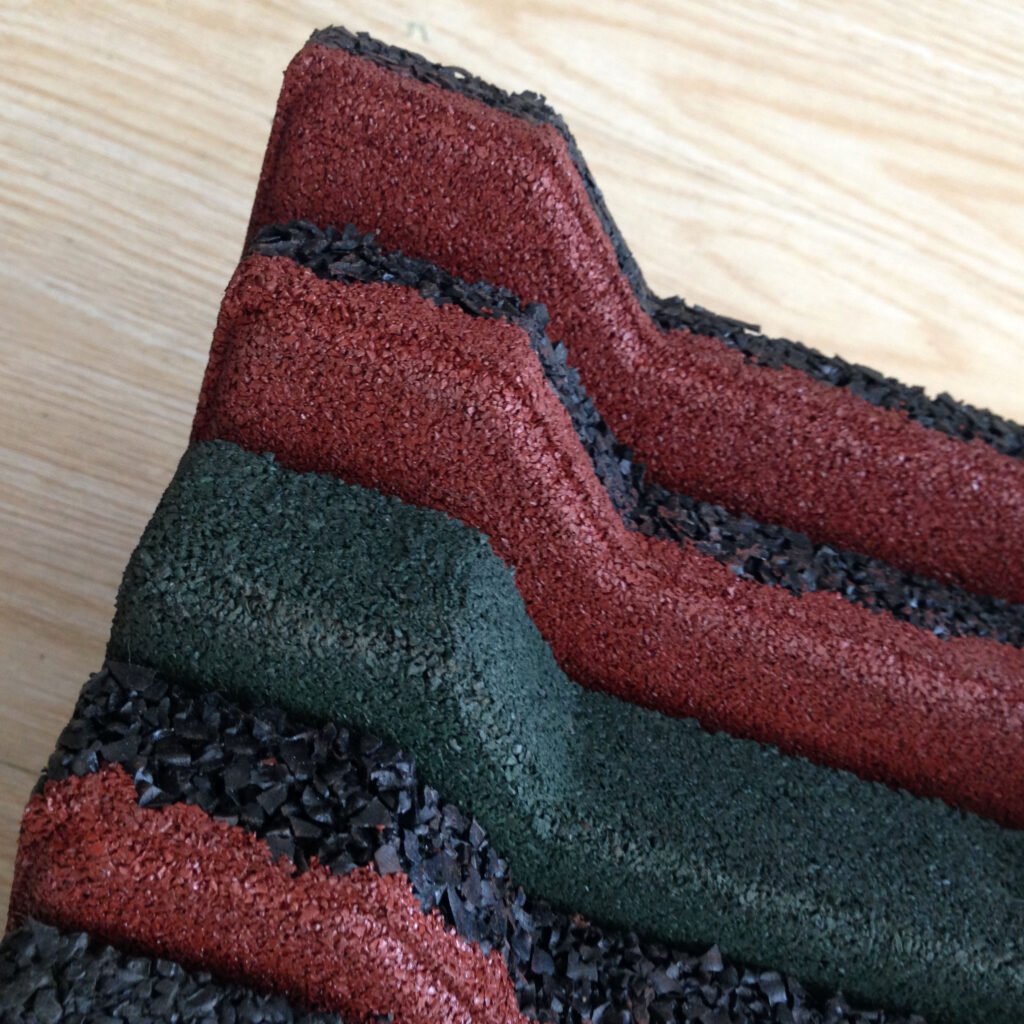
What Should Place Under Horse Stall Mats for Optimal Performance?
While horse stall mats are practical on their own, adding an underlayment can enhance their performance, especially in shock absorption and noise reduction—two factors most home gym owners highly value.
Rubber Rolls or Underlayment Tiles
Consider laying down rubber rolls or interlocking rubber tiles as a base. This layer acts as a buffer between the hard floor and your mats, providing extra cushioning and helping to even out any minor imperfections in the subfloor.
Carpet Padding or Cork Sheets
For a more inexpensive way to add cushioning, carpet padding or cork sheets can be an adequate underlayment. They’re particularly good at reducing noise, which is a bonus if your gym is in a shared space.
Plywood for Uneven Surfaces
If your gym floor is uneven, laying a flat surface like plywood can create a more stable base for your stall mats. This helps prevent the mats from shifting and ensures your gym equipment remains stable.
Foam Tiles for Lighter Use Areas
In areas where you’ll be doing more stretching or bodyweight exercises, foam tiles can provide enough support and are easy to install.
Remember, underlayment’s primary purpose is to enhance your gym flooring’s functionality. Choose the option that best suits your workout needs and the physical characteristics of your gym space.
Are There Any Downsides to Using Horse Stall Mats for Gym Flooring?
While horse stall mats are a popular and cost-effective solution for home gym flooring, they’re with drawbacks. Let’s address some of the common concerns that come up when considering these mats for your workout space.
The Strong Odor Saga
One of the most immediate downsides you’ll notice upon installation is the pungent odor, a natural characteristic of virgin rubber. This smell can be quite pronounced and may take several weeks to dissipate. This can be a significant inconvenience for those with sensitive noses or in poorly ventilated spaces.
Battling Uneven Seams
Horse stall mats can sometimes be challenging to align perfectly, especially if your floor is only somewhat level. Uneven seams disrupt the flat surface and can become tripping hazards or cause instability for gym equipment. It’s crucial to lay the mats as tightly as possible and use an appropriate adhesive to mitigate this issue.
The Deadlift Platform Dilemma
While rubber stall mats are durable and shock-absorbent, serious lifters may still need a deadlift platform. This is because repeated heavy lifts can still transmit significant force to the floor underneath, and over time, this can lead to wear and tear on both your equipment and the building’s structure. A dedicated platform can also provide a more stable lifting surface and further noise reduction.
Despite these concerns, many home gym owners find that the benefits of horse stall mats—such as their durability, cost-effectiveness, and ease of installation—outweigh these potential downsides.

How Do You Maintain and Clean Horse Stall Mats in a Gym Setting?
Regular cleaning and maintenance are essential to ensure the longevity of your horse stall mats and maintain a hygienic workout environment.
Here are some best practices to keep your rubber gym flooring in top shape:
Routine Sweeping and Vacuuming
Dust and debris can accumulate quickly, especially in a gym setting. Use a broom or vacuum regularly to remove surface dirt. This keeps the mats looking good and prevents abrasive particles from wearing down the surface over time.
Spot Cleaning Spills and Stains
If you spill any liquids or drop something that leaves a stain, spot-clean the area promptly. Use a mild detergent mixed with water, apply it to the site, and scrub with a soft-bristled brush. Rinse with a damp cloth and let the mat dry completely.
Deep Cleaning Schedule
Every few months, give your mats a deep clean. You can use a mild disinfectant cleaner that’s safe for rubber. Apply it with a mop or sprayer, scrub as needed, and then rinse the mats with water. Ensure the space is well-ventilated to dry the carpets quickly.
Disinfecting for a Germ-Free Environment
Especially in a gym setting, it’s essential to disinfect the mats to prevent the spread of germs. Use a disinfectant compatible with rubber and follow the manufacturer’s instructions for application.
Avoid Harsh Chemicals
Harsh chemicals can degrade rubber over time, leading to cracks and dryness. Always check the cleaner’s compatibility with rubber before applying it to your mats.
Regular Inspections
Periodically check your mats for signs of wear and tear, such as cracks, fraying, or uneven wear patterns. Addressing these issues early can prevent further damage and extend the life of your mats.
Following these maintenance tips, you can keep your horse stall mats—and your home gym—clean, safe, and inviting for every workout.
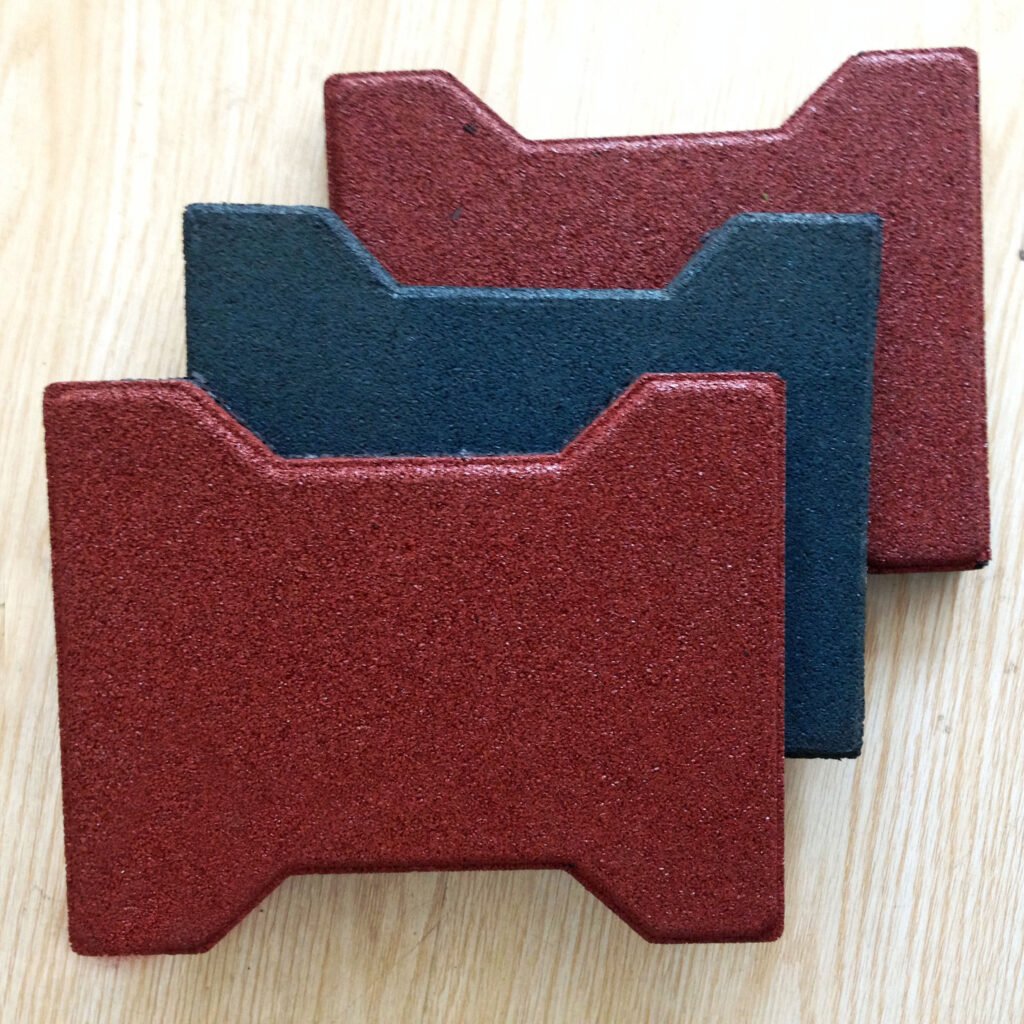
Selecting the Ideal Thickness for Your Gym Mats: A Guide for Home Gyms
Crafting the perfect home gym starts from the ground up, and choosing the optimal thickness for your gym mats is a pivotal decision. Whether you’re unrolling a yoga mat in your basement gym or setting up a weightlifting area in your garage gym, the thickness of your matting is critical to your workout experience.
For Grounding Yoga Poses and Stretching
Yoga enthusiasts and stretching gurus might lean towards thinner mats. A stall mat around 1/4 inch thick can offer ample support for seated or lying poses, ensuring comfort without losing touch with the firmness of the floor underneath.
For Dynamic Movements and Moderate Weight Training
Those engaging in more vigorous activities, such as Zumba or moderate kettlebell workouts, would benefit from a stall mat with more cushion. A 1/2-inch thick mat strikes a harmonious balance, providing a stable platform and cushioning the joints.
For the Rigors of Heavy Weights and Energetic Plyometrics
For the home gym warriors lifting heavy or engaging in high-energy plyometrics, a horse stall mat of at least 3/4 inch to a full inch is recommended. These thicker gym mats are the workhorses of flooring, offering the robustness needed to absorb the shock of heavy barbells and the bounce of plyometric jumps, all while protecting the flooring underneath.
Tailoring to Your Workout Regimen
It’s common for a home gym to serve multiple purposes—from a weight room to an aerobics studio. Thus, choosing a horse mat that can withstand the most intense activity you’ll perform is wise. Alternatively, layering different types of rugs—perhaps a thinner yoga mat atop a thicker horse mat—can provide versatility for a multi-discipline fitness routine.
Evaluating the Shock Absorption of Horse Stall Mats for High-Impact Workouts
Horse stall mats from tractor supply stores have become a staple for the economical home gym enthusiast. But beyond their affordability, how do these stall mats and rubber flooring options meet the demands of high-impact activities?
Shock Absorption for Weightlifters and High-Energy Workouts
The standard horse stall mat, usually about 3/4 inch thick, is crafted from dense rubber capable of supporting animal mats and the rigorous demands of a weightlifting regimen. This thickness is generally sufficient to absorb the drop of a dumbbell, safeguarding the floor underneath from damage.
Plyometrics and Cardio Workouts: Is Additional Cushioning Needed?
While these horse mats are adept at handling the occasional dropped weight, plyometric exercises’ continuous bounce and energy may call for additional padding. For these high-impact movements, consider layering other or specialized shock mats to ensure your joints and floors are adequately protected.
The Verdict for High-Impact Gym Enthusiasts
Horse stall mats are a robust and cheapest option for many home gym owners, providing a level of shock absorption suitable for various exercises. However, supplementing these mats with additional cushioning could enhance comfort and performance for those who frequently engage in high-impact activities.
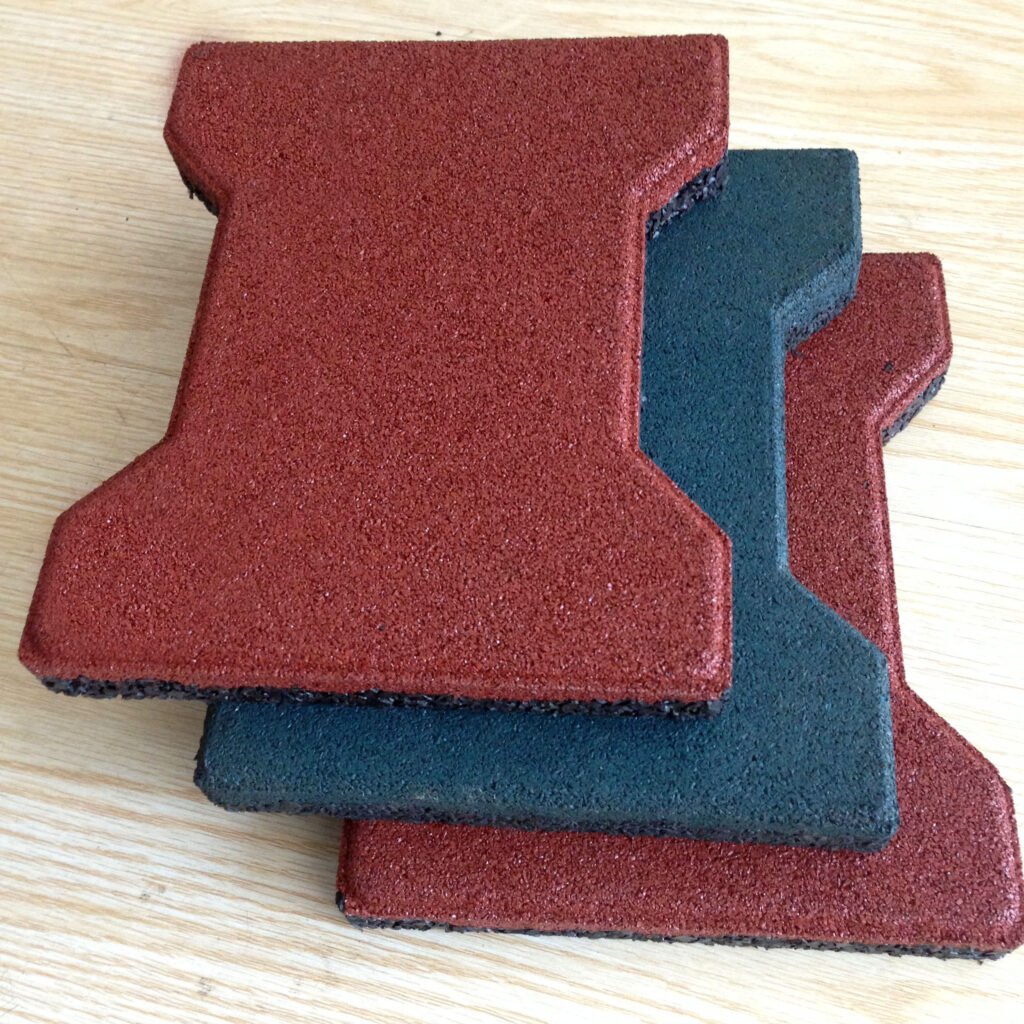
What's the Verdict: Stall Mats or Deadlift Platform for Home Gym?
When it comes to kitting out your home gym, the debate between sticking with stall mats or splurging on a deadlift platform is expected. Both have their merits, but what’s the best move for your muscle-building mecca?
Stall Mats: The Economic, Versatile Choice
Stall mats, particularly those sourced from tractor supply stores, have become the go-to for home gym owners looking for a durable, cost-effective solution. They’re tough, designed to withstand large animals’ weight, and surprisingly adept at handling dropped weights. Plus, they’re a fraction of the cost of a deadlift platform.
Deadlift Platforms: The Dedicated Lifter’s Dream
On the flip side, a deadlift platform is specifically designed for lifting heavy. They often feature a combination of rubber and wood, providing a firm, stable surface ideal for powerlifting. The wood center allows for a consistent foundation for your feet, and the rubber sides absorb shock and noise when you drop the bar.
The Best Fit for Your Fitness Goals
Stall mats may suffice if you’re a casual lifter or working with a tight budget. They’re versatile enough to support a variety of exercises beyond deadlifting. However, if you’re serious about lifting and regularly hoisting hefty weights, investing in a deadlift platform could be beneficial for added stability and floor protection.
How Much Weight Can Horse Stall Mats Support Without Compromising Durability?
Horse stall mats are a heavyweight contender in gym flooring, but how much weight can they handle before you start seeing signs of surrender?
Built to Bear the Burden
Designed originally for equine environments, these mats are made to support several hundred to over a thousand pounds—the average weight of a horse. This translates well into the gym setting, where they can endure the daily dropping of heavy dumbbells and barbells without flinching.
The Limitations of Rubber
However, it’s important to note that while stall mats are incredibly resilient, they’re not indestructible. Consistently dropping weights over the same spot can eventually wear down the rubber. For most home gym owners, this isn’t a concern, as the wear would be spread over various areas of the mat.
Gym Equipment and Longevity
Regarding supporting gym equipment, horse stall mats provide a stable base for power racks, benches, and other heavy apparatus. The key to maximizing their lifespan is to ensure an even weight distribution and avoid dragging sharp edges across the surface, which can cause gouges and tears.
In summary, horse stall mats offer a high weight capacity sufficient for most home gym setups, ensuring durability and longevity under normal use conditions.

In conclusion, whether you’re a seasoned weightlifter or a weekend warrior, choosing the suitable stall mats for your home gym is a game-changer. These rugged mats, typically sized at a roomy 4×6 feet and weighing around 100 pounds, offer a blend of durability, stability, and shock absorption that’s hard to beat. By calculating your space’s square footage, you can determine how many of these stalwart mats you’ll need to create a safe and supportive environment for your fitness journey. So, roll out those mats, secure them in place, and get ready to take your home workouts to the next level—your health haven awaits!


